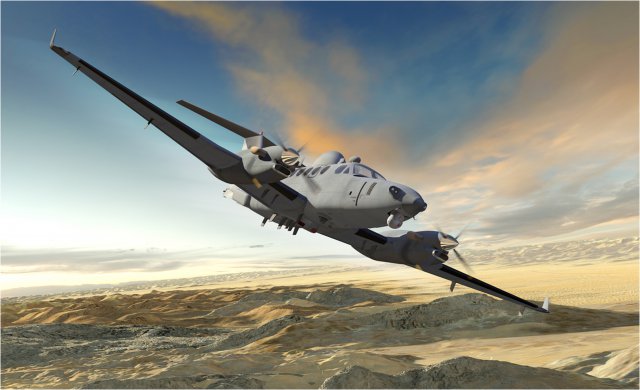Lockheed Martin has bagged a roughly $25 million contract to integrate a vehicle and dismounted exploitation radar (VADER) system into a Beechcraft King Air 350ER.
The work to integrate VADER – which is expected to be complete by March 2015 – adds to Lockheed’s ongoing surveillance support efforts in Afghanistan. Since 2009, the company has operated and supported a fleet of US Army-owned King Airs equipped with the medium-altitude reconnaissance surveillance system (MARSS).
Established by army task force ODIN – an acronym for observe, detect, identify and neutralise – MARSS aircraft include a mix of King Air 200s, 300s and 300ERs, says Lockheed. Those aircraft are currently based at three locations in Afghanistan. They use full-motion video and communications and signals intelligence sensors to monitor insurgents and counter threats posed by improvised explosive devices, Robert Brusco, Lockheed’s technical services business development director, tells Flightglobal.
Brusco says Lockheed, which is currently operating under a $76 million MARSS contract awarded in October 2013, has a group of 65 employees who fly and maintain the aircraft, and provide logistics and supply chain support. The aircraft fly about 12h daily, seven days a week.
Lockheed’s team now has its sights set on the army’s enhanced MARSS – a reconnaissance aircraft project under development (below).

US Defense Department Science Blog/US Army
EMARSS, which will be integrated into new King Air 350ERs, will use electro-optical/infrared sensors, a communications intelligence payload and an aerial precision geolocation system.
The army is procuring four EMARSS aircraft in fiscal year 2014 for $84.7 million, and plans to buy 16 in FY2015 for $185 million, according to budget documents.
Brusco says Lockheed will bid on the second round of procurement, and he expects a request for proposals to be released in about a year.
“We are going to leverage our knowledge and familiarity with the current system to compete for the next round of these enhanced sensor aircraft,” he says.
Source: FlightGlobal.com























